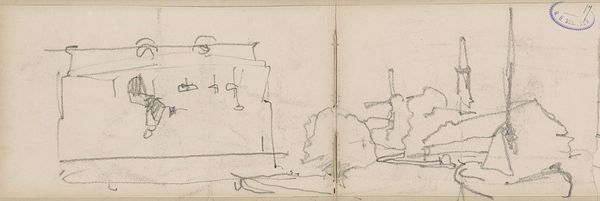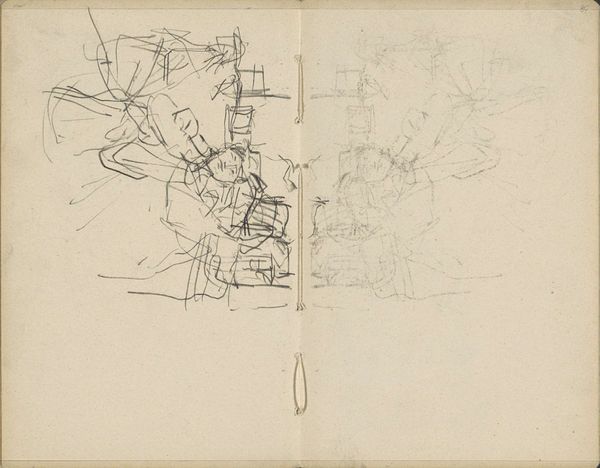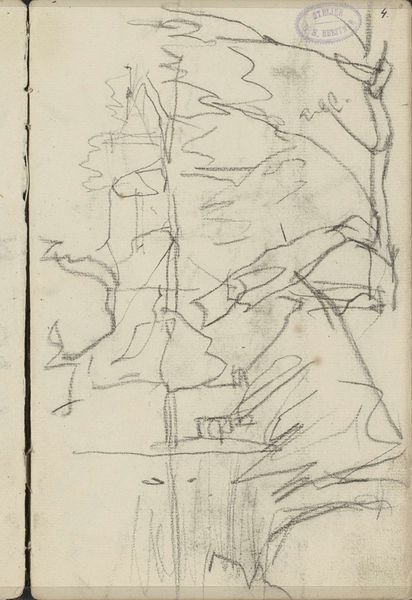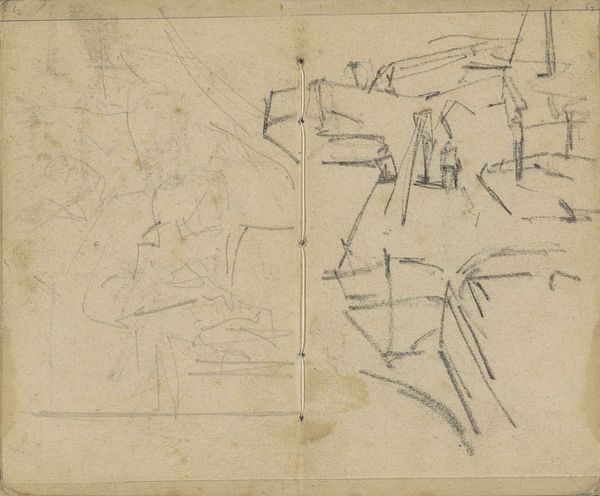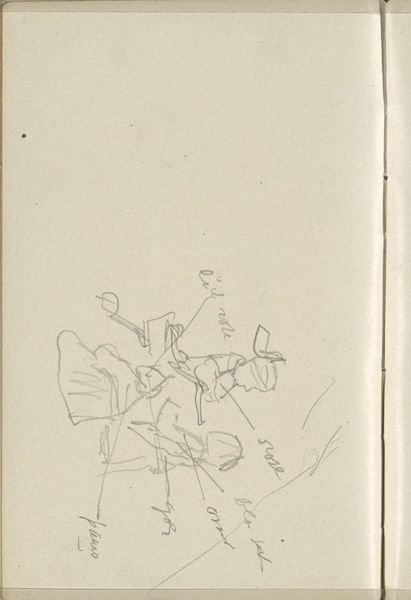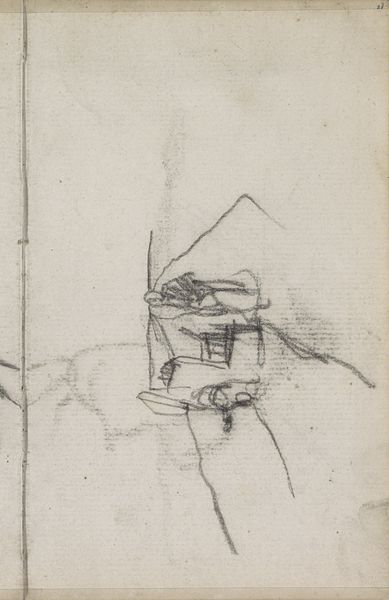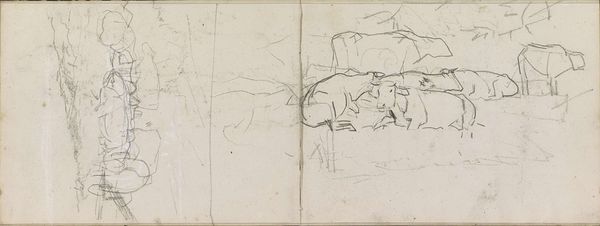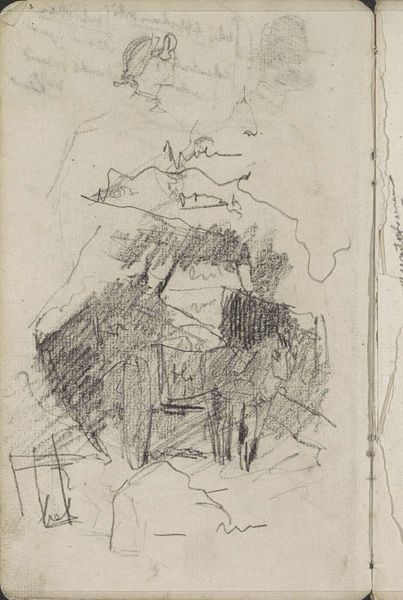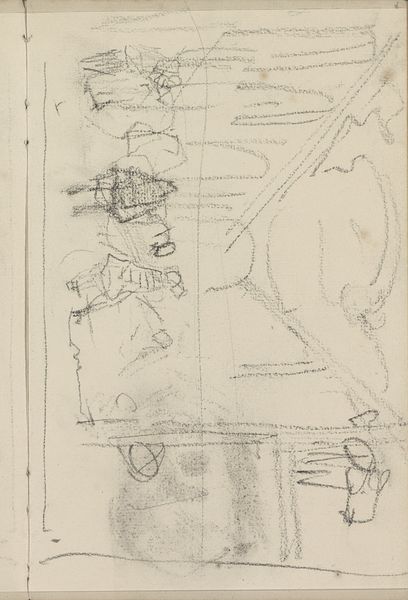
Copyright: Rijks Museum: Open Domain
Editor: So, this is "Meisjes op een brug bij de Prinsengracht," or "Girls on a Bridge by the Prinsengracht," a pencil drawing by George Hendrik Breitner, dated circa 1885 to 1898. It feels almost like a fleeting glimpse of everyday life, capturing a moment in time. What are your initial thoughts on its historical context? Curator: It’s intriguing, isn't it? Breitner's work, though leaning towards Impressionism, is firmly rooted in portraying Amsterdam's burgeoning modernity. These quick sketches of working-class figures are quite deliberate. They capture the city's shifting social fabric. Think about the rise of urban photography and its influence. How might Breitner be engaging with that new visual culture? Editor: That's a great point, the sketch-like quality does evoke a photograph. But it's also very painterly, even in its unfinished state. How do you see the role of the Rijksmuseum, where it is exhibited now, in shaping our understanding of this type of work? Curator: The Rijksmuseum places Breitner within a narrative of Dutch art history, which both legitimizes his artistic choices and also perhaps tames their radical nature. Presenting this sketch elevates what might once have been considered a preliminary study into a valuable cultural artifact. Do you see any tension between its initial purpose and its current status? Editor: Definitely. Knowing it was likely a quick sketch changes how I perceive it. I appreciate the glimpse into his process, but also recognize how the museum transforms it, assigning it a new kind of significance. Curator: Exactly. Consider also that showing the girls together with a dog speaks to a shifting visual and cultural trend as cities evolve. These sketches offer a glimpse of daily lives amid intense economic development. So the museum is not simply presenting pretty sketches, but rather helping visitors like us look closely at these social contexts. Editor: I hadn't considered it that way. I am taking this to mean that there are very strategic ways of shaping art production and how to read it as it plays out in a broader setting? Curator: Yes, and this insight offers so much room for further explorations! I hope that others pick up this clue for studying works that seem simplistic on their surface, as there are often social political agendas just below it.
Comments
No comments
Be the first to comment and join the conversation on the ultimate creative platform.

